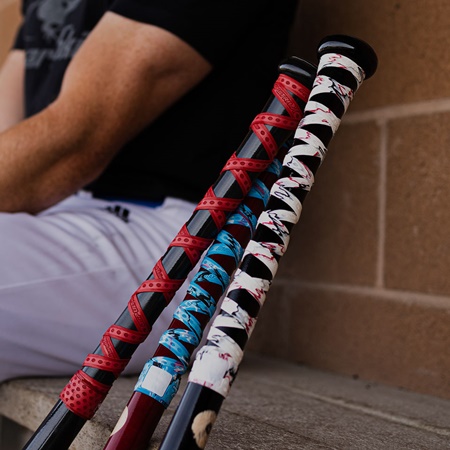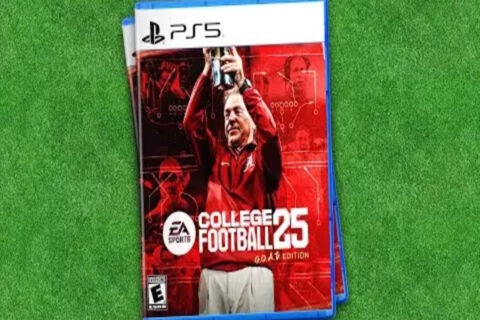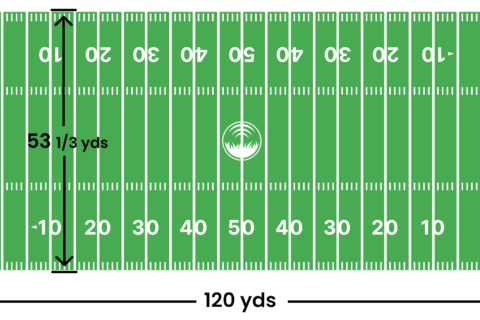It is illegal to have pine tar above the handle of a baseball bat because it provides an unfair grip advantage. This can affect the ball’s trajectory and balance.
Baseball regulations strictly control equipment to ensure fair play. Pine tar, a sticky substance, helps players get a better grip on their bats. While it is allowed on the handle, using it above the handle violates the rules. This is because it can alter the bat’s performance, giving the hitter an unfair edge.
Enforcing these rules maintains the integrity of the game. Players and teams must adhere to these guidelines to ensure a level playing field for all participants. Understanding these rules helps fans appreciate the game’s fairness and competitiveness.
The Role Of Pine Tar In Baseball
Pine tar is a sticky substance that helps players grip the bat. It is used to prevent the bat from slipping during swings. While it aids grip, rules limit its placement.
A Sticky Situation
Players can apply pine tar to the lower part of the bat. This provides a better hold. But placing pine tar above the handle is illegal. It creates an unfair advantage by enhancing bat control. This rule ensures fair play.
The Historical Context
The pine tar rule became famous in 1983. George Brett’s home run was nullified because of excessive pine tar. The event led to a debate on the rule. The rule’s aim is to maintain balance in the game.
| Aspect | Details |
|---|---|
| Purpose | Enhance grip |
| Legal Placement | Below the handle |
| Illegal Placement | Above the handle |
| Notable Incident | George Brett’s home run (1983) |

Credit: www.lizardskins.com
Regulations On Pine Tar Usage
Pine tar is a sticky substance used by baseball players. It helps improve grip on the bat. But, there are strict rules about where it can be applied. Too much pine tar can give unfair advantages. This is why the rules are important.
The Official Rulebook
The official Major League Baseball (MLB) rulebook has clear guidelines. Pine tar can only be applied on the handle of the bat. The allowed area is 18 inches from the bottom. Using it above this mark is illegal. This rule ensures fair play and equal opportunity for all players.
| Rule | Description |
|---|---|
| Rule 3.02(c) | Pine tar must not be applied above 18 inches from the bottom of the bat. |
Infamous Pine Tar Incidents
One famous incident is known as the Pine Tar Game. On July 24, 1983, George Brett hit a home run. The opposing team noticed pine tar above the 18-inch mark. Brett’s home run was nullified. This caused a huge argument and the game was paused.
This incident showed the importance of the rule. It also showed how players could try to gain an unfair advantage. The rule ensures that all players compete fairly.
Another incident involved a pitcher using pine tar. While pitchers use it for grip, it’s still against the rules. The player was ejected from the game. This showed that the rule applies to all players, not just batters.
These incidents highlight why the rule exists. It keeps the game fair and competitive. All players must follow the same rules.
Grip Enhancement: Pros And Cons
Understanding the rules around pine tar on baseball bats can be confusing. This section explores the grip enhancement benefits and drawbacks.
Improved Player Performance
Pine tar helps players hold the bat firmly. A firm grip can lead to better swings. Players can control the bat more easily. This control may result in more accurate hits. It can also reduce the chance of the bat slipping. Less slipping can mean fewer errors during play. Pine tar can be especially useful on hot, sweaty days. The sticky substance keeps hands from slipping. This can boost a player’s confidence at the plate.
Concerns Over Fair Play
Too much pine tar can be unfair. It can give players an edge over others. The rules are strict about its use. Pine tar above the handle is not allowed. This rule is to keep the game fair. Excessive pine tar can affect the ball’s flight. It may also cause the ball to stick to the bat. This can change the game’s outcome. Fair play is a big part of baseball. The rules aim to ensure everyone plays on a level field.
The Ban On Excessive Pine Tar
The use of pine tar in baseball is common among batters. Pine tar helps players grip the bat better. But, there is a rule against having too much pine tar on the bat handle. This rule exists to keep the game fair and balanced.
Reasons Behind The Ruling
Pine tar makes the bat sticky. This sticky surface can help batters hold the bat without slipping. But, if there is too much pine tar, it can go beyond the handle. This is where the problem starts.
Rule 1.10(c) of Major League Baseball (MLB) states that pine tar must not extend more than 18 inches from the end of the handle. If it does, the bat is considered illegal. This rule ensures that the bat does not become an unfair advantage.
One main reason for this rule is to keep the ball clean. Excessive pine tar can transfer to the ball, making it sticky. A sticky ball can affect how pitchers throw and how fielders catch. It changes the natural flow of the game.
Impact On The Game
The ban on excessive pine tar ensures fair play. It maintains the integrity of the game. When pine tar is used correctly, it helps batters. But too much of it can lead to issues.
In a famous incident, George Brett of the Kansas City Royals hit a home run. The opposing team noticed that Brett’s bat had too much pine tar. The umpires checked and ruled the bat illegal. The home run was nullified. This incident showed how important the rule is.
Keeping the pine tar within the legal limit helps maintain a level playing field. It ensures no player gets an unfair advantage. This rule is crucial for the fairness and enjoyment of baseball.
Notable Pine Tar Controversies
Pine tar has sparked many debates in baseball history. The sticky substance, used for better grip, has strict rules in place. Let’s explore some notable pine tar controversies.
Game-changing Moments
One of the most famous incidents is the Pine Tar Game. On July 24, 1983, George Brett of the Kansas City Royals hit a home run. The New York Yankees challenged the hit. They claimed Brett had too much pine tar on his bat. The umpires measured the bat. They found the pine tar extended above the legal limit. The home run was nullified. Brett was furious. He charged out of the dugout. The game continued under protest. Later, the American League president reversed the decision. The home run was reinstated. The Royals won the game.
Another significant moment involved Graig Nettles of the Yankees. In 1973, he was caught using a bat filled with superballs. Though not directly related to pine tar, it highlighted the lengths players go for an edge. The incident led to more scrutiny of bat modifications.
Reactions From The Baseball Community
The baseball community had mixed reactions to these controversies. Many players and fans felt the rules were too strict. They argued that pine tar helps with grip, not hitting power. Some believed the rules needed updating. Others felt the rules ensured fair play. Coaches often reminded players of the rules. They wanted to avoid penalties.
Umpires played a key role in these controversies. They had to enforce the rules fairly. This sometimes put them at odds with players and fans. The debates continue to this day. Pine tar remains a hot topic in baseball.

Credit: en.wikipedia.org
Alternatives To Pine Tar
Many players use pine tar to improve their grip on the bat. But, it’s illegal to have it above the handle. Are there alternatives to pine tar? Yes, there are! Let’s explore some of them.
Approved Substances
The baseball league allows several substances for better grip. These substances are safe and effective.
- Rosin Bags: These bags contain a powder that absorbs sweat. It helps players maintain a firm grip.
- Grip Tape: This tape wraps around the bat handle. It provides a sticky texture for a better hold.
- Batting Gloves: These gloves have padding and materials that enhance grip. They are comfortable and easy to use.
Innovations In Bat Technology
Modern bats have new technology that helps grip. These innovations reduce the need for pine tar.
| Innovation | Benefit |
|---|---|
| Textured Handles | These handles have a rough texture that improves grip. |
| Anti-Slip Coating | This coating provides a sticky surface without the mess of pine tar. |
| Ergonomic Design | These bats are shaped to fit the hand better, reducing slippage. |
These alternatives are effective and legal. They provide a strong grip without breaking the rules.
Player Perspectives On Pine Tar
Many players have unique views on the use of pine tar in baseball. Let’s explore how veterans and newcomers differ in their opinions.
Veterans Vs. Newcomers
Veteran players often have strong opinions about pine tar. They believe it provides a better grip on the bat. This improves their swing and control. Many veterans grew up using pine tar. It has become a crucial part of their game.
On the other hand, newcomers are still learning the ropes. They may not feel as strongly about pine tar. Some may even find it unnecessary. New players often focus on mastering the basics first.
Here is a table showing the differences:
| Veterans | Newcomers |
|---|---|
| Strong reliance on pine tar | Less reliance on pine tar |
| Improves grip and control | Focus on basic skills |
| Part of their routine | Still learning game rules |
Adapting To The Rules
Players must adapt to the rules about pine tar. The rule states it can’t be above the handle. This is to maintain fair play.
Veterans adapt quickly to this rule. They have experience and know how to adjust. They use just enough pine tar to stay within the rules.
Newcomers may struggle at first. They need time to understand why the rule exists. They learn from coaches and teammates. Over time, they too adapt to these regulations.
Both veterans and newcomers find ways to comply. Here are some steps they follow:
- Apply pine tar below the handle.
- Check bat before each game.
- Seek advice from experienced players.
Adapting to the rules is key for all players. It ensures fair play and keeps the game enjoyable.

Credit: www.justbats.com
The Future Of Pine Tar In Baseball
The use of pine tar in baseball has sparked many debates. Its primary purpose is to improve grip, but it also has its controversies. Let’s explore the future of pine tar in baseball.
Possible Rule Changes
Baseball rules could change to adapt to new challenges. Some suggest allowing more pine tar on bats. This might help players improve their grip. It could reduce the number of bats slipping from hands.
| Current Rule | Proposed Change |
|---|---|
| Pine tar only on the handle | Pine tar allowed above the handle |
| Strict inspections | Relaxed inspections |
These rule changes could lead to fewer broken bats. It might also make the game safer for players and fans.
Evolving Attitudes And Technologies
Attitudes towards pine tar have evolved. Some players and coaches support its use. They believe it improves performance and safety.
Technology also plays a role. New materials could replace traditional pine tar. These materials might offer better grip without sticky residue.
- Advanced gripping agents
- Improved bat designs
- New regulations for safety
The future of pine tar in baseball will involve balancing tradition with innovation. As the game evolves, so will the tools and materials players use.
Conclusion
Understanding the rules around pine tar helps preserve baseball’s integrity. Using it above the handle gives hitters an unfair advantage. Compliance ensures fair play and sportsmanship. By following these guidelines, players contribute to a level playing field. Let’s appreciate the game while respecting its rules.








